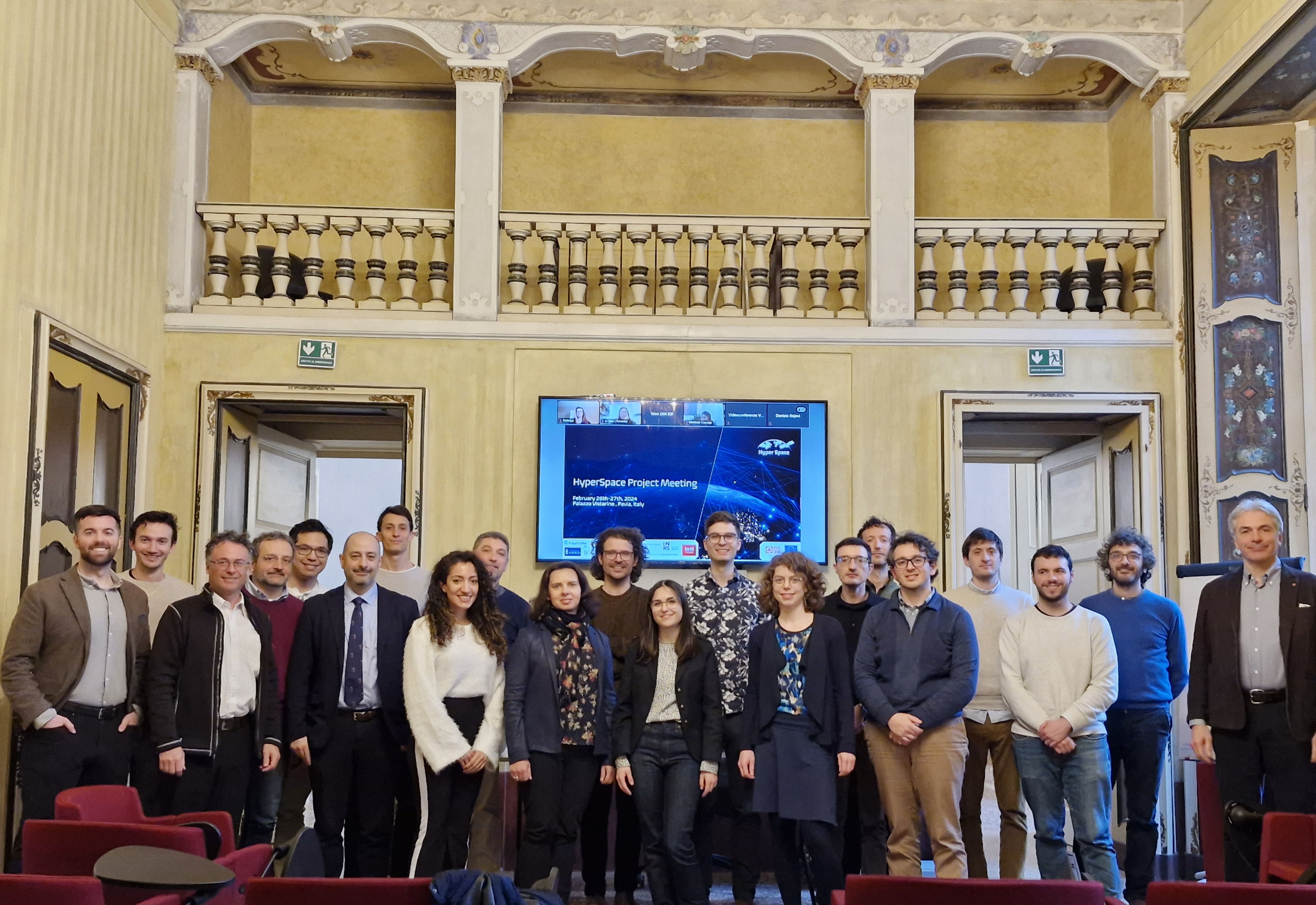On the way to an intercontinental network for quantum key communication, the research consortium behind the HyperSpace project has already achieved numerous milestones since the project was launched in October 2022. The research results published in the first half of the project open up new application possibilities for the transmission of quantum keys, for example for satellite-based quantum communication.
The HyperSpace project, coordinated by the "Quantum Communication" group at the Fraunhofer Institute for Applied Optics and Precision Engineering IOF, was launched in October 2022 with the aim of advancing the vision of a global network for virtually tap-proof quantum communication. The research project, which is funded by the European Commission and the Natural Sciences and Engineering Research Council of Canada (NSERC), can report on numerous milestones in the interim report that has now been presented.
With this report, the consortium has successfully completed the first half of the project. The published research results show, among other things, new source developments and implementation options for quantum key distribution (QKD), which are now to be tested in the field.
Record certification and realistic noise model
High-dimensional entanglement, which is used in quantum communication to encrypt data, can be implemented in various degrees of freedom. These describe dimensions in which the transmitted light particles, photons, can move and change. In quantum physics, for example, this relates to the dimensions of time and polarization. In a first step, the researchers have developed a comprehensive analysis of high-dimensional entanglement in the time-polarization dimension, which will allow relevant safety parameters for QKD to be certified in the future. The scientists are thus presenting a new, highly efficient and non-local certification approach.
In addition, the researchers of the HyperSpace consortium have proposed an innovative setup that can further improve the noise resistance of wireless quantum communication. These new findings now open up possibilities for the application of high-dimensional entanglement in quantum communication (1) (2).
Stable quantum key transmission over long distances
In order to create an intercontinental network for quantum communication, large distances must be overcome by QKD. One challenge in this context is phase stabilization. This serves to control and minimize fluctuations and changes in the signal during the transmission of quantum keys. Until now, stabilization has been achieved by exchanging reference signals. However, this is particularly difficult over free space, as would be the case with satellite based QKD.
The HyperSpace researchers have therefore developed an approach that works entirely without phase stabilization - the reference frame-independent time-bin quantum key exchange. The time-bin format uses an additional dimension to store and transmit quantum information by dividing the information into individual time windows or "bins". This method is particularly resilient to interference and distortion and is therefore well suited for use on fast-moving platforms such as airborne or satellite systems (3).
For QKD via satellite, the quantum sources developed must be compact and powerful. The researchers have therefore developed a silicon-based source that is implemented in a fully CMOS-compatible platform. The high energy efficiency and compactness open up promising possibilities for use in various applications (4).
Partner meeting at the halfway point of the project
At the end of February, representatives of the HyperSpace consortium met at the Universitá di Pavia in Pavia, Italy, to review the past project period.
During the event, the past months were reviewed in presentations and discussions and the current status of the project was presented. The project partners also talked about the next research projects to accompany the second part of the project. "At the face-to-face meeting, there was a special dynamic and energy to drive the project forward together - the project partners shared research results, exchanged ideas in various discussion rounds and agreed on the next steps to realize our plans," summarizes project manager at Fraunhofer IOF Dr. Karin Burger.
Original publications
(1) M. Cabrejo-Ponce, A. L. M. Muniz, M. Huber, F. Steinlechner: »High-Dimensional Entanglement for Quantum Communication in the Frequency Domain.« Laser Photonics Rev 2023, 17, 2201010. https://doi.org/10.1002/lpor.202201010
(2) A. Bergmayr, F. Kanitschar, M. Pivoluska, M. Huber: »How to harness high-dimensional temporal entanglement, using limited interferometry setups.« Quantum Physics, https://doi.org/10.48550/arXiv.2308.04422
(3) R. Tannous, W. Wu, S.e Vinet, C. Perumangatt, D. Sinar, A. Ling, T. Jennewein: »Towards Fully Passive Time-Bin Quantum Key Distribution over Multi-Mode Channels« Quantum Physics, https://doi.org/10.48550/arXiv.2302.05038
(4) A. Barone, M. Clementi, T. Poempool, A. Marcia, D.Bajoni, M. Liscidini, D. Gerace, T. Fromherz, M. Galli: »Generation of entangled photon pairs from a silicon bichromatic photonic crystal cavity.« APL Photonics 1 January 2024; 9 (1): 016110. https://doi.org/10.1063/5.0170292
